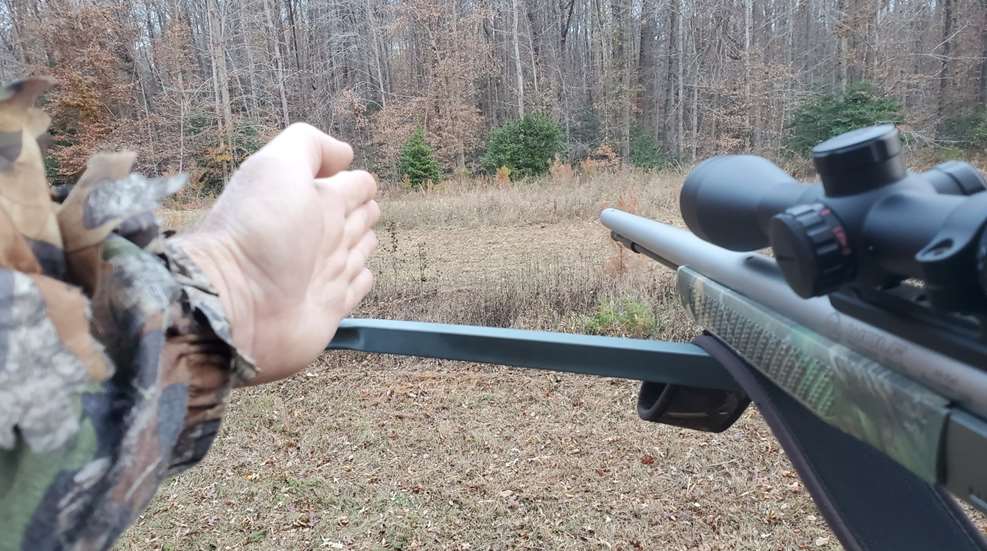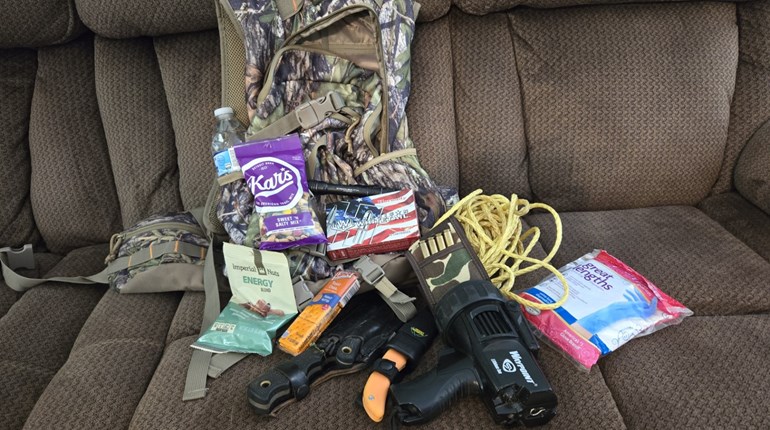
A nice deer steps into an opening, offering a quartering shot for you. Your freezer has a void that you need to fill, and this is a great opportunity. As you touch off the trigger, your heart is racing with anticipation. Did you get the deer?
As a mentor for a number of new hunters over the years, I have learned that what we do from the moment we trip the trigger on our firearm, bow or crossbow can make or break the chances of recovering a big-game animal. There are a series of steps I encourage all of my new hunters to follow; committing these steps to memory and practicing them has helped my family and mentees locate and recover game on countless occasions. Roaming around aimlessly looking for game is not productive, and it can cover up sign and allow time for coyotes to get to your game first, or worse, not allow you to recover game at all!
1. Make a good shot
This goes without saying. Everyone gets “buck fever” or excited when the game shows up and we get a shot. However, it is critical you follow through on the shot and not jump off the stock quickly to “see” the result. Make the shot count so you know it was a good shot. Aim at a tiny spot on the animal, not just at the entire animal.
2. Wait
Everyone wants to run out and see if they got the animal they just took a shot at. In my opinion it is critical that we stop and collect our thoughts and think about what just happened; replay it in our minds and visualize the sequence of events.
3. Watch
Immediately after tripping that trigger, watch the animal. You can usually tell if the animal is hit hard. They may sag, buckle, buck, jump oddly or hunch up. Usually, if a deer bounces away with its tail up like it only got spooked, you missed. A deer with a hunched body, tail tucked or down indicates in many cases it was hit. An honest recollection of your shot and how you felt about it when the gun went off can support this theory.
Where did the animal go? Follow it with your eyes until you cannot see it any longer. Then …
4. Listen
Listen for any crashing, breaking of branches or thuds. I have actually been able to hear my deer go down at least 25% of the time. Considering how bad my hearing is, that is pretty helpful. Wheezing and snorting by a lone deer after it runs off is not an indication of a mortally wounded animal. A sudden crash and thrashing around in the limbs and leaves is.
5. Line up
Before you leave the spot where you took the shot, line up the shot. Look for something that was directly past the animal’s location when you took the shot. Then look directly behind you and, finally, find something the animal was standing near so you can reasonably find the exact spot the animal was standing to look for hair or blood.
Next, do the same thing with the last spot the animal was seen so you can go directly to that place and be right on top of it. This is particularly true when hunting over a field where the entire field may look the same on the ground with little to distinguish one place from another. In those situations, I like to pick out a dark tuft of grass or weeds. Sometimes I will even lay sticks at certain spots in the field before I hunt it so I can determine where the deer was standing when I shot. (Was it near the pine limb I put out or the old rotten oak limb?)
Sometimes animals do not bleed right away. This is the value of having the last spot you saw the animal lined up and determined so when you go to that spot you are in the right area to begin looking for blood or hair.
6. Go look
Once you lined up the animal’s initial position and the last position seen, go to the initial position first and look for sign of a good hit. Bright red blood, hair etc… then either track that or in absence of good sign, mark the spot with flagging and travel to the last seen position. Pick up your sign there.
7. Mark sign as you track
You should at this point see some sign of a good hit if you did your part behind the firearm, bow or crossbow correctly. The tracking is a whole other story located here. As you track, mark signs with orange or hot pink flagging so you can easily see the spots as you go forward. This makes backtracking or figuring out the direction an animal went much easier.





































